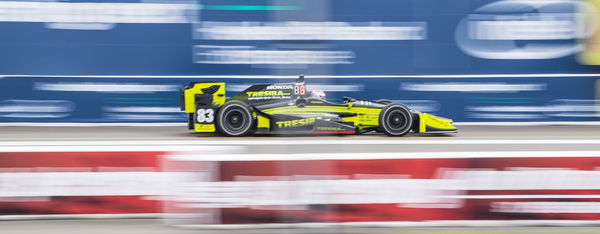The Pole Position Advantage - Understanding How Often the Pole Sitter Has Won the Indy 500
Last updated May 24, 2023

Qualifying for the pole position is the goal for each driver, but how big of an advantage is it to start from the front, and how many times have the pole sitter ended up winning the Indy 500?
This year's Pole sitter is Indycar series leader Alex Palou. Palou is also our best bet for the Indy 500, and based on historical data, he should have a 20% chance of winning the race. The odds on Palou at DraftKings are currently at +600, which indicates a probability of 14,28%. History should be in favor of the bettor backing Alex Palou.
✅ Rapid Growth: Norris is quickly improving his racecraft.
✅ Strong Team Support: McLaren's tech and strategy give him a solid edge.
✅ Consistency: His calm mindset helps him deliver strong performances.
✅ Innovative Engineering:Ferrari’s continuous tech upgrades boost performance.
✅ Experienced drivers: Hamilton and Leclerc are two of the best and most consistent drivers on the grid.
✅ Strategic Investments: Smart resource allocation keeps them competitively ahead.
Decoding the Enigma of the Pole Position in Indy 500
The Indianapolis 500, colloquially known as the Indy 500, has always been a spectacle of speed, precision, and strategy. Held annually at the Indianapolis Motor Speedway in Speedway, Indiana, this race is a coveted event in the American automobile racing calendar. The pole position is a crucial element among the various aspects that add to its charm and challenge. It's not just a symbol of a driver's prowess in qualifying rounds but is often seen as a predictor of success in the race. But how much does it truly matter?
The Fascinating History of Pole Sitters in the Indy 500
The history of pole sitters in the Indy 500 traces back to the race's inception in 1911. The pole sitter, the driver who starts the race from the front position, is decided based on the speeds achieved in the time trials leading up to the race.
Over the years, the pole position has been honored, often secured by the crème de la crème of the racing world. It's viewed as a tactical advantage that gives the pole sitter the initial edge—no traffic ahead and a clear path into the first corner.
Iconic Pole Sitters Who Raced to Victory
Several notable drivers have successfully converted their pole positions into victories. One of the most memorable is Rick Mears, who, during his illustrious career, secured the pole position six times and won the race four times. Ayrton Senna, a revered figure in the formula 1 motor racing world, was also known for his extraordinary skill in securing and capitalizing on pole positions. These legends, among others, exemplify the potential advantage the pole position can bring in this prestigious race.
The Science Behind the Pole Position Advantage
At first glance, starting ahead of everyone else might seem to be an unquestionable advantage. However, the correlation between the pole position and winning the race is not as straightforward as one might think.
The Role of Qualifying Rounds in Determining the Pole Sitter
Before the race, the qualifying rounds set the stage. Each driver strives to clock the fastest time over the four-lap (ten-mile) time trial, determining the race's starting grid. The fastest driver earns the pole position. This gives them the psychological advantage of leading the pack and placing them in the track's most tactical spot.
The Impact of Track Positioning and Strategy
However, it's important to note that being a pole sitter doesn't guarantee a win. While it offers a strategic edge, it doesn't negate the need for impeccable driving skills, a highly efficient car, perfect pit-stop strategies, and good luck. The track position gives a clean start, but numerous other factors influence the ebb and flow of the race. The driver's ability to navigate through traffic, adapt to changing track conditions, and respond to challenges often proves more critical in determining the race's outcome.
Understanding the pole position's significance involves appreciating the blend of skill, strategy, and a little bit of destiny that propels a driver from the pole position to the winner's podium. As we delve deeper into specific instances, we'll appreciate the intricate dynamics of the Indy 500 and the polesitter's intriguing role in it.
Deep Dive: Pole Sitters Who Won the Indy 500
Understanding the importance of the pole position requires examining the experiences of those who have found themselves in this coveted spot. While the pole position is a significant advantage, it takes more than just a fast qualifying time to win the Indy 500.
Unforgettable Moments: Pole Sitters' Victories Through the Years
History had seen many unforgettable moments when pole sitters tasted victory in the Indy 500. Let's look at some of the most iconic victories by pole sitters that have shaped the history of the Indy 500.
The Golden Era: Notable Victories from Pole Sitters
There have been eras in the history of the Indy 500 when pole sitters regularly converted their advantage into victories. One such period was the 1970s and 1980s, often called the golden era of pole sitters at the Indy 500. Drivers like Rick Mears, Tom Sneva, and A.J. Foyt turned their pole positions into resounding victories. This period saw the pole sitter win the race six times in 20 years, reinforcing the importance of the pole position.
Statistically Speaking: Quantifying the Pole Position Advantage
Despite these memorable victories, looking at the overall data to get a clear picture of the pole position advantage in the Indy 500 is essential.
A Look at the Numbers: Pole Sitters vs. Non-Pole Sitters
Historically, the Indy 500 has seen the pole sitter win the race about 20% of the time. While this number might seem relatively small, it is significant compared to the winning percentages of drivers starting from other positions on the grid. The pole sitter has a clear line of sight, fewer cars to overtake, and can often dictate the pace of the race.
Comparative Analysis of Winning Odds
Pole sitters often enjoy better odds of winning the race than non-pole sitters. For instance, drivers starting from positions 6-10 have won the race about 15% of the time, and the percentage decreases as we move back on the grid. Therefore, while being a pole sitter does not guarantee a win, it does tilt the odds in the driver's favor.
However, racing is as unpredictable as it is exciting. Various factors, weather conditions, pit strategy, and even sheer luck, affect the outcome. The Indy 500 is no exception, and it continues to be a thrilling spectacle where anything can happen, regardless of where one starts.
The Pole Position Conundrum: Always a Guarantee for Victory?
The coveted pole position at the Indy 500 carries prestige and advantage, but does it always guarantee victory? The short answer is no. Racing is an intricate ballet of speed, strategy, timing, and a dash of luck. Sometimes, even the advantageous pole position cannot assure a win.
Instances When Pole Sitters Did Not Taste Victory
While the pole position can offer a significant advantage, there have been numerous instances where pole sitters did not find their way to victory. Even the fastest qualifiers have often found the race slipping away due to various unforeseen circumstances.
For instance, in 2019, Simon Pagenaud began the Indy 500 in pole position but came second in a thrilling finish. Similarly, in 2015, Scott Dixon started from pole but ended up in the fourth position. These instances underscore that pole sitters, despite their advantageous start, do not always clinch the victory.
Breaking Down the Factors
Several factors contribute to why a pole sitter might not secure the win. One crucial element is the ever-changing nature of racing conditions. Weather can change rapidly, affecting track grip and car performance. Mechanical issues can also play a pivotal role, as even the most minor glitch can result in significant time loss in a race as tight as the Indy 500.
Moreover, the Indy 500 is as much about strategy as it is about speed. The timing of pit stops, fuel management, tire changes, and handling traffic can all dramatically affect the outcome of the race. Even the best starting position cannot compensate for shortcomings in these areas.
Furthermore, luck often plays a role in racing. An unfortunate accident or a poorly-timed caution flag can easily alter the race's trajectory, affecting not just the pole sitter but the entire field.
In conclusion, while the pole position provides an initial advantage in the Indy 500, it's only a part of the equation. Victory depends on a myriad of other factors that come into play during the race, making the Indy 500 the exhilarating and unpredictable event that fans worldwide have come to love.
FAQ: The Pole Position and the Indy 500
The intriguing relationship between the pole position and the Indy 500 is a subject of curiosity for many fans and enthusiasts. Here, we address the three most commonly asked questions about this dynamic.
How is the pole position determined in the Indy 500?
The pole position, or the first spot on the starting grid, is determined by qualifying rounds held in the days leading up to the Indy 500. Drivers complete a four-lap (ten-mile) time trial, and the driver with the fastest average speed across these four laps is awarded the pole position.
Does starting from the pole position guarantee a win in the Indy 500?
While the pole position provides a significant advantage, it does not guarantee a win in the Indy 500. Winning the race depends on a combination of factors, including the driver's skill, car performance, pit-stop strategy, and luck. Historically, the pole sitter has won the Indy 500 about 20% of the time.
Who holds the record for the most wins from the pole position in the Indy 500?
Rick Mears holds the record for the most victories from the pole position in the Indy 500. He achieved this feat four times during his illustrious career, winning the Indy 500 from the pole position in 1979, 1984, 1988, and 1991.









